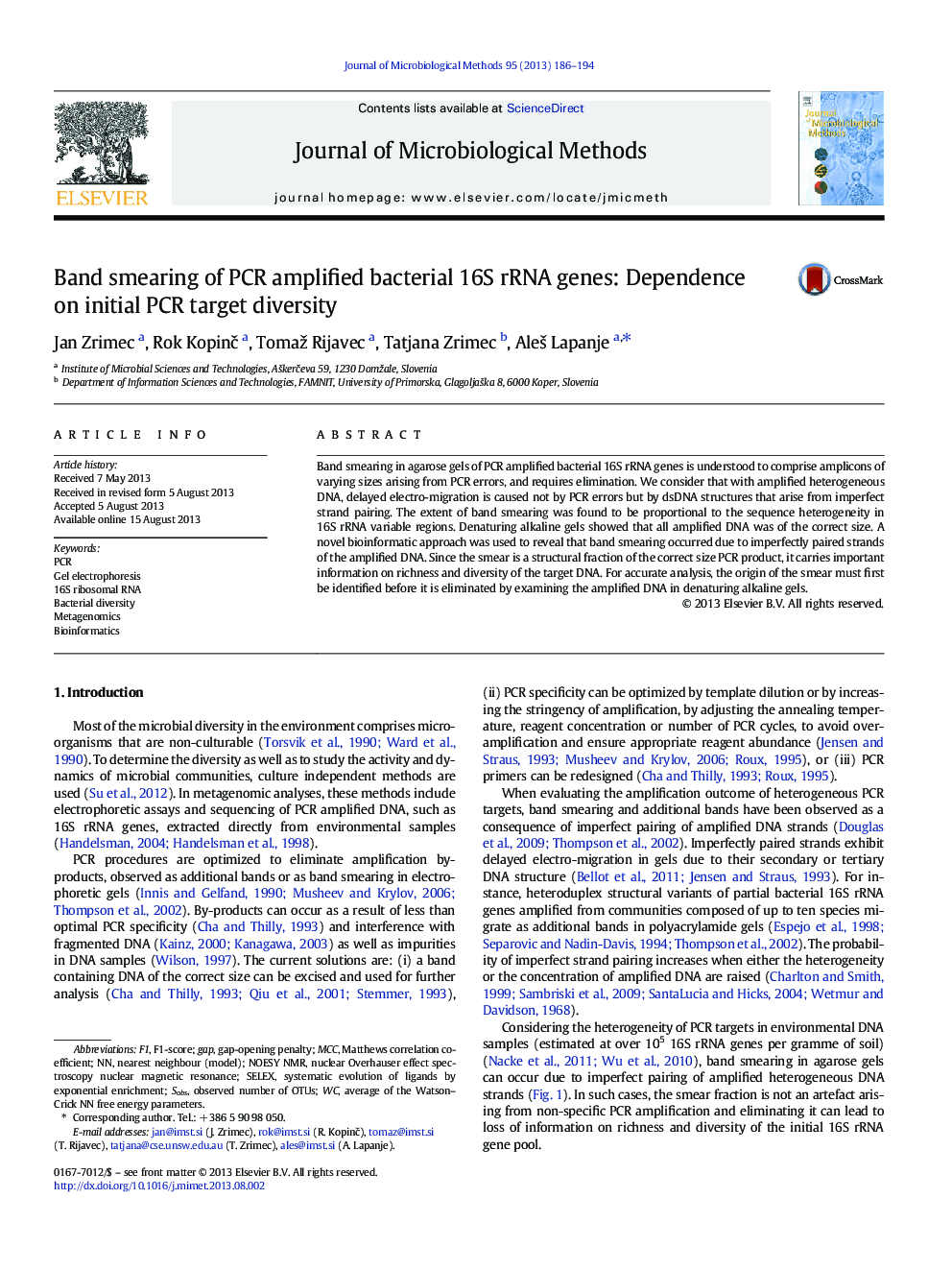| Article ID | Journal | Published Year | Pages | File Type |
|---|---|---|---|---|
| 2090034 | Journal of Microbiological Methods | 2013 | 9 Pages |
•Band smearing is proportional to the heterogeneity of target DNA.•Band smearing is attributed to imperfect strand pairing of the PCR product.•The smear contains vital information on richness and diversity of the target DNA.•Eliminating the smear is detrimental to the 16S rRNA analysis.•Denaturing alkaline gel electrophoresis reveals whether smear should be eliminated.
Band smearing in agarose gels of PCR amplified bacterial 16S rRNA genes is understood to comprise amplicons of varying sizes arising from PCR errors, and requires elimination. We consider that with amplified heterogeneous DNA, delayed electro-migration is caused not by PCR errors but by dsDNA structures that arise from imperfect strand pairing. The extent of band smearing was found to be proportional to the sequence heterogeneity in 16S rRNA variable regions. Denaturing alkaline gels showed that all amplified DNA was of the correct size. A novel bioinformatic approach was used to reveal that band smearing occurred due to imperfectly paired strands of the amplified DNA. Since the smear is a structural fraction of the correct size PCR product, it carries important information on richness and diversity of the target DNA. For accurate analysis, the origin of the smear must first be identified before it is eliminated by examining the amplified DNA in denaturing alkaline gels.
Graphical abstractFigure optionsDownload full-size imageDownload as PowerPoint slide
